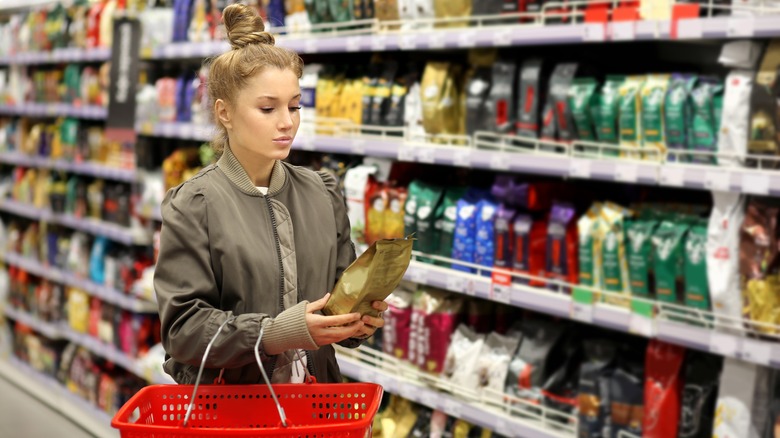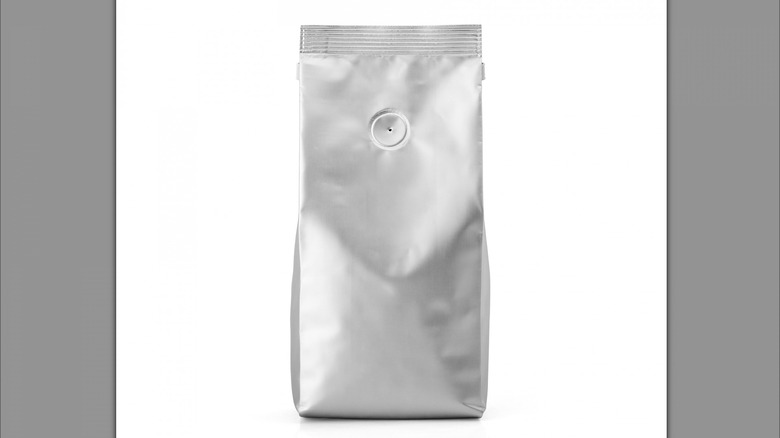How To Pick The Best Coffee Bags For Lasting Freshness
While it is fun for coffee fans to nerd out about all the details that factor into making a perfect cup of joe, it is easy to overlook a super important factor — the bag it comes in. That's because the type of bag is an indicator of how fresh the beans or grounds are, and freshness is a major determinant of flavor in the final brew.
The best type of bag to seek out is a vacuum-sealed bag that has undergone flushing. Vacuum sealing removes most — but not all — of the air in the package. The process of flushing then displaces the remaining oxygen in the package with an inert gas like nitrogen. This slows oxidation, reduces moisture, and keeps the coffee at peak freshness for longer. These bags will also often have a one-way degassing valve, which allows for carbon dioxide that the roasted beans release to escape without oxygen reentering. The valve is only necessary for freshly roasted beans, so it can serve as an indication of freshness to consumers.
If you are in a hurry or have limited options, a factory-sealed bag of any material keeps beans fresher than an open container. So, you may want to skip getting your beans from the bulk section of your grocery store if freshness is important to you. Also, opt for an opaque bag as light can also cause coffee to degrade.
How long does coffee stay fresh?
Unopened, vacuum-sealed, nitrogen-flushed coffee with a degassing valve will stay fresh for about six months from the roast date. If the product has not undergone nitrogen flushing, it will stay fresh for closer to three months. No matter how it was stored, once it is opened, you should use it within three weeks at the most. When it comes to optimal taste, the sooner you consume it, the better.
It is highly unlikely that coffee will go bad in the sense that it will spoil and make you sick. However, even if it is safe to drink long past the date on the package, it may not necessarily taste great. Coffee does get stale and develop off flavors. Light, heat, oxygen exposure, and moisture all accelerate that process. If coffee grounds or beans get wet, they can get moldy. In that case, go ahead and throw them away.
How to keep coffee fresh
One way to ensure you have the freshest coffee possible is to just buy small quantities at once. Your best chance of getting super fresh beans is to go to an actual roaster, a coffee shop that sources directly from roasters, or a cafe that roasts its own beans. There are also many online retailers of freshly roasted beans. Since coffee freshness quickly degrades once the bag is opened, opt for a package size that you can finish consuming within a week or so. Also, whole coffee beans will stay fresher longer than pre-ground coffee. Even if you are not used to dealing with whole beans, an at-home coffee grinder may be worth it because blitzing the beans right before brewing has a significant impact on aroma and flavor.
Improper storage may be one of the mistakes that are leaving you with less-than-perfect espresso. Once you have opened the bag, transfer the beans or grounds to an opaque, air-tight container made out of porcelain, ceramic, or glass. Keep it away from light and any sources of heat. Cool room temperature storage is ideal, and many coffee experts recommend against storing coffee in the fridge or freezer. This can dull the taste of the coffee, cause it to absorb ambient flavors, and create an environment where humidity can develop.



